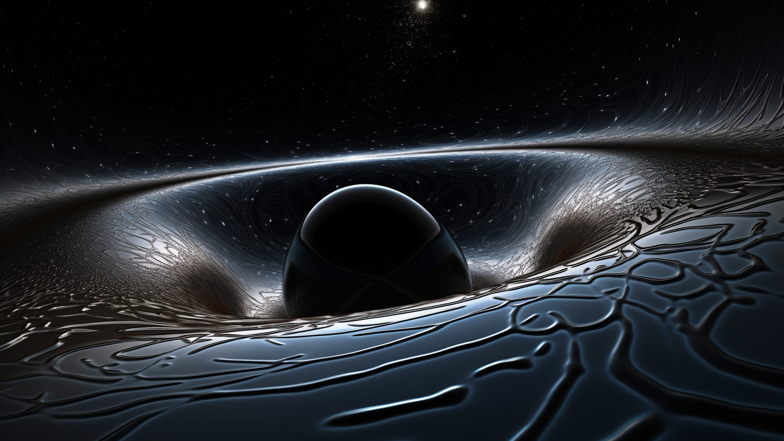
One of the key features of black holes is their event horizon, which is the point of no return beyond which nothing can escape. The event horizon marks the boundary of the black hole and its gravitational pull is so strong that it traps everything inside it, including light. Any object that crosses the event horizon is said to be inside the black hole and is doomed to fall towards its singularity, a point of infinite density where space and time come to an end.
The physics of black holes is influenced by their mass, spin, and charge. A black hole with no spin and no charge is known as a Schwarzschild black hole, which is the simplest and most widely studied black hole. However, most black holes in the universe spin and have some charge, which makes their physics more complex.
The study of black holes has led to some of the most profound discoveries in astrophysics, such as the understanding of the mechanics of gravity and the nature of space-time. Black holes have also provided scientists with a new tool for studying the universe, as they can be used to study the properties of galaxies and other celestial objects.
One of the most intriguing aspects of black holes is the so-called information paradox, which has puzzled scientists for decades. According to the laws of physics, information cannot be destroyed, yet a black hole seems to destroy anything that enters it, including information. This paradox has led to many debates and theories, such as the idea that black holes may create new universes or that they may be portals to other dimensions.
Another mystery surrounding black holes is their relationship with the cosmic microwave background radiation. The cosmic microwave background radiation is the leftover heat from the Big Bang and is believed to be a relic of the early universe. However, recent observations have suggested that black holes may be responsible for some of the variations in the cosmic microwave background radiation, which has challenged our understanding of the early universe.
Despite all the progress that has been made in the study of black holes, there are still many unanswered questions and mysteries that surround them. Scientists are still trying to understand the nature of the singularity and the laws of physics that govern it. They are also trying to develop new ways to study black holes, such as the use of gravitational waves, which were first detected in 2015.
The study of black holes has also led to some interesting applications in technology, such as the development of new types of telescopes and space probes. For example, the Event Horizon Telescope, a network of telescopes around the world, was able to capture the first-ever image of a black hole in 2019.
Black holes may be enigmatic and mysterious, but they have also played a crucial role in shaping our understanding of the universe as we know it. Through the study of black holes, scientists have been able to gain new insights into the mechanics of gravity, the nature of space-time, and the properties of the early universe. As our technology and understanding of the universe continue to evolve, we can expect many more discoveries and breakthroughs in the fascinating world of black holes.
Comments
Post a Comment